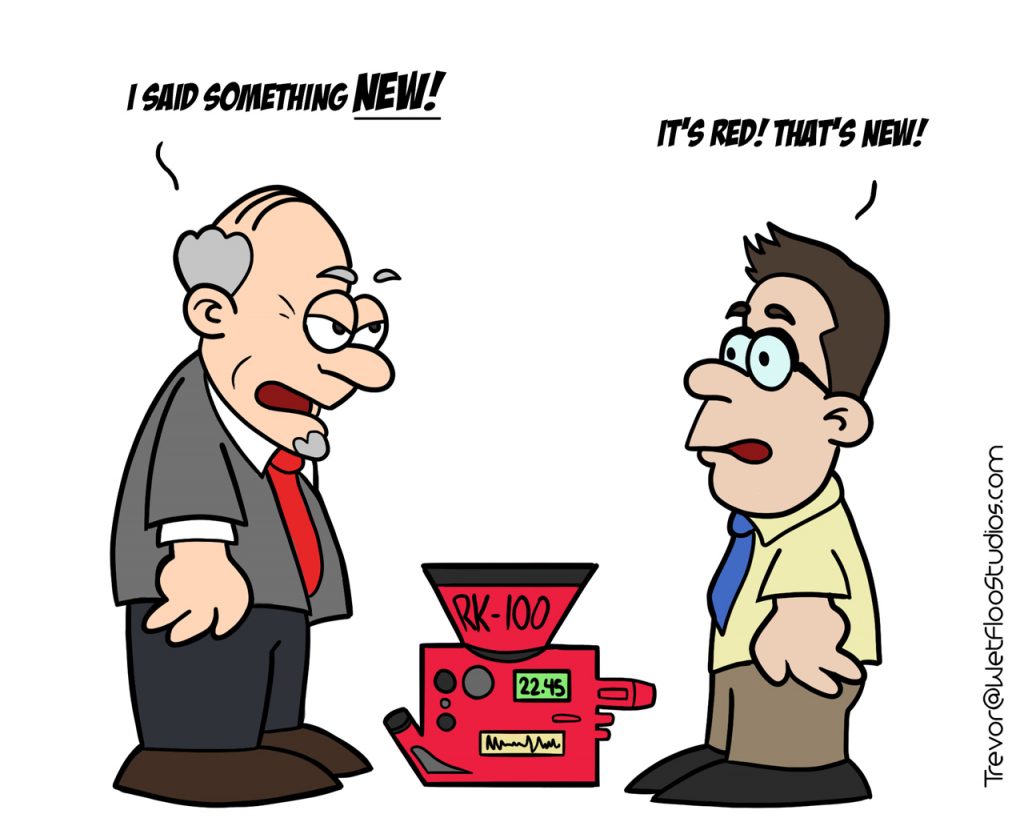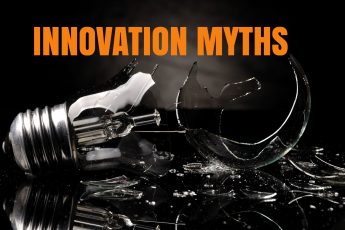
Creating a Better Innovation Definition
Chances are, if you talk to five different leaders and ask them “What is innovation?” you’ll probably end up with five different answers. The ironic part? Innovation is an extremely popular buzzword and yet business leaders don’t always agree on the definition. Often you hear phrases like “creating new products.” Sometimes you get a cheeky answer like “the process of innovating.” After a couple of answers like that, you head over to Merriam-Webster.com for the definitive answer. Well, their definition is a little broader: a new idea, method, or device.
The importance of a unified definition of innovation
So, with this disparity in definition amongst thought leaders and the dictionary (and in my opinion, all seem a bit vague), it’s no wonder that most organizations struggle to define and agree upon the definition of innovation. How can we expect organizations to develop strategies when we cannot agree on what it means? How can we align our teams if everyone is not on the same page?
I am a firm believer in the importance of simplicity in an organization. For me, without simplicity, it’s extremely hard to have a unified vision. Without a unified vision, chaos in strategy exists. It’s no wonder that many companies struggle with innovation. I’ve witnessed firsthand that companies fail at innovation when the vague directive says, “Go create something new.” The typical result? Your already semi-useless widget now comes in the color red. BUT it’s NEW! No wonder innovation fails.

A unified definition of innovation allows everyone in your organization to get on the same page. Smart companies realize that the definition for innovation differs for every company. If you’re a small- to mid-sized company, your latest product enhancement might be an innovation since it makes a dent in your universe. For someone like Google or Tesla, it would not be considered innovative because it doesn’t make a dent in the universe.
Where some definitions miss the mark
I think that the Merriam-Webster dictionary gets it wrong, too. They use the word “new.” I don’t agree that it must be something new. For example, perhaps I take the functionality of Amazon’s Alexa-powered devices (not new) but I apply it to something that doesn’t have that functionality, such as a washing machine. In this case, it’s not new technology, but it is an innovation to the appliance industry. Still, an innovation, right? I think by using the word “new” in the definition restricts the focus to only look at new things. In the washing machine example, it was something borrowed and not new. For simplicity sake, we need to remove the word “new” from our improved definition.
And I think that a lot of the current thought leaders have it wrong too. Without throwing shade on anyone specific, I don’t know if they’re purposely trying to make it sound more intellectual or if they’re just trying to sound so much different than their counterparts. But here’s my take: Innovation doesn’t necessarily have to be industry disrupting. It doesn’t have to be a new technology. Being radical is not a requirement either. It doesn’t have to change the world and it doesn’t need to create new markets. It just needs to solve your customer’s problem—better.
My improved definition of innovation
Here’s my take on defining innovation:
The process of creating a problem-solving solution that provides customer value beyond your current market offerings.
Let me break down why I think it works:
- To me, innovation is a process. And I think this is important to remind people that it’s a process. Every company needs to find a process that is best for their company, and that’s why I omitted any reference to any part of the process, such as creating ideas, building a hypothesis, product prototyping, testing, validating, etc.
- I’ve included problem solving in the definition because that thinking needs to be top of mind anytime we’re working in innovation. Problem solving is the purpose.
- Whether it’s an idea, an enhancement, a product, a service, a process—or a combination of any of these—all these serve as a solution to the main purpose: solving the customer’s problem.
- Providing customer value is a by-product of solving customer’s problem. The better it solves the customer’s problem, the more customer value. But when we specifically call it out like this, it tends to become a criterion in which we can judge an innovation’s impact.
- “Beyond your current market offerings” simply implies better than what’s out there right now. So why not just go with “better”? I think that “beyond your current market offerings” does a better job suggesting that the goal should be to meet or exceed the market’s future requirements and needs.
So, what do you think? Is it simple enough for everyone in your organization to understand and adopt? Can this definition keep us focused and guide our actions? Will it allow us to develop a unified vision that specific strategies can be built around?
Let me know your thoughts.

(Many thanks to Trevor at Wet Floor Studios for the graphics!)




Leave a Comment